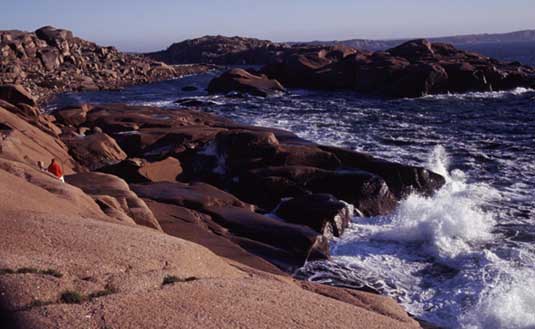
|
Granite in Stångehuvud: Feldspar, quartz and mica Potassium feldspar makes the red colour Back If you take a closer look at the coarse granite of Stångehuvud, it is potassium feldspar (and the occurence of iron, Fe) that gives it the characteristic red colour. The crystals of K-feldspar are here as most two centimeters long. There is also a different type of feldspar, plagioclase, that can be seen as quite small greenish white grains. The white or grayish translucent elements in the granite consists of quartz, a hard nutrient-poor mineral. Clearly grayish quartz, commonly called smoky quartz, is also abundant in Stångehuvud. As very thin slices of white or black is the mineral mica occuring. The black type, biotite, dominates. Feldspar, quartz and mica are the three most important minerals that build up the granite. There are also other minerals occuring in the granite in smaller extent, for example uranium, which after decompostion forms the radioactive isotope radon. |
|
Coarse-grained reddish granite in Stångehuvud at Kramkistesund. |